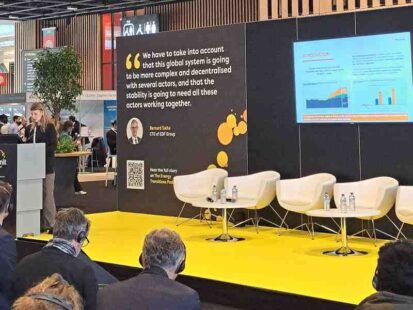
Bringing out the most from flexible systems can enable a valuable entry point for consumers into the power system and support power grid management. However, barriers, such as the digitalisation of data, persist against its uptake, says Hanne Pittomvils, System of the Future Analyst for Elia.
Discussing the TSO Group’s study into power flexibility, The Power of Flex, during a session at Enlit Europe 2023, Pittomvils says how the value case for power flexibility is clear, but that more yet is needed to fulfil its potential uptake and impact on energy systems:
“We know (flexibility) is beneficial for the energy system but more importantly it can serve as a benefit for end consumers.”
According to Pittomvils, rapid increases in electricity across sectors such as mobility and heating have added exponential levels of demand to the grid and “will have a lot of challenges for the electricity system – imagine everyone coming home and charging at the same time.”
This is where flexibility would come in, where “by being able to consume electricity in a flexible way, households and industries will be given control over the management of their own peak consumption.
“They will be able to avoid costly price peaks by mainly consuming electricity when it is sufficiently windy or sunny.”
Also of interest:
Opportunities for energy flexibility through network integration
How to involve small buildings in the energy transition through demand-side flexibility
Barriers barring consumer-side flexibility
Although there are models where this has translated into financial incentives for residential and industrial consumers, according to Pittomvils and Elia’s report there are three key barriers barring the potential offered by flexibility mechanisms:
1. A “lack of digital infrastructure to unlock the data needed to unlock flexibility”
Citing the cases of Germany and Belgium, Elia’s two operating territories, the report states that while other European countries have already finalised smart meter rollouts, many households in Germany and Belgium still have analogue meters, which work with a mechanical counter and do not record or display when electricity was consumed.
Smart meters, on the other hand, track energy use during time intervals, allowing consumers to monitor their consumption habits, understand the impact of their behaviour and receive electricity bills based on their (quarter) hourly consumption.
Therefore, to induce a shift in people’s consumption behaviour based on price signals, having a smart meter is a must.
Pittomvils adds that a lack of standardisation and interoperability, as well as the complicated nature of data access from smart meters and behind-the-meter devices, further adds to this lack of much-needed digital infrastructure.
2. Non-existent valorisation
According to Pittomvils, limited availability of competitive time-based energy price contracts, conflicting price signals limiting impact of flexibility participation on consumer bills and high energy requirements for new suppliers and BPRs (Balancing Responsible Parties) slowing down competitive services have limited the uptake of flexibility models for consumers.
3. Consumers are not being engaged enough to participate.
According to Pittomvils, on the residential-side, consumers remain conservative when it comes to the energy sector and are concerned about their comfort and privacy due to a lack of trust, making onboarding more difficult than it should be.
Additionally, companies are often unaware of the value proposition behind flexibility steering and do not integrate it in their roadmaps.
Have you read:
IEA calls for doubling down on energy efficiency action
Investment needed to keep grid fit for purpose says Enel Grids boss
Unlocking consumer-side flexibility
In mind of these barriers, Elia’s study outlines different solutions to unlocking the potential of consumer-side flexibility.
1. Providing access to financial incentives
Flexible consumption, states Elia, should be integrated into everyday practices with any owner of flexible assets able to participate.
To enable this, they state it is essential for current market participants to collaborate on shaping a market design that encourages innovative business models and facilities the integration of flexibility into the broader energy landscape.
2. Enable seamless data access for energy service providers (ESPs)
According to Elia, there is an urgent need for European Member States to start coordinating their work on enabling easy access to data and the sharing of this data at the smart meter level.
Additionally, there is a need to start coordinating their work on access to data and the sharing of energy-related data from different types of behind-the-meter devices such as batteries, EVs, charging points, etc. It is important to take the services that these could offer – including flexibility services and smart charging services – into account.
Creating a secure data exchange ecosystem, they state, with well-defined access rights that supports near real-time data exchange is crucial as it would allow commercial parties to deliver services to consumers and enable system operators to efficiently manage the grid.
3. Introduce flex-ready devices
According to the report, electrical assets like EVs, batteries and heat pumps will have to meet a minimum number of requirements in order to be able to provide flexibility.
These include the ability to change their load based on external signals, have communication interfaces that allow third party access, compatibility with other devices, etc.
Today, states Elia, there are no official requirements regarding what it means for an asset to be smart and steerable. Thus, Elia Group states that there should be a focus on standardisation and the development of a flex-ready label with manufacturers and other system operators.




